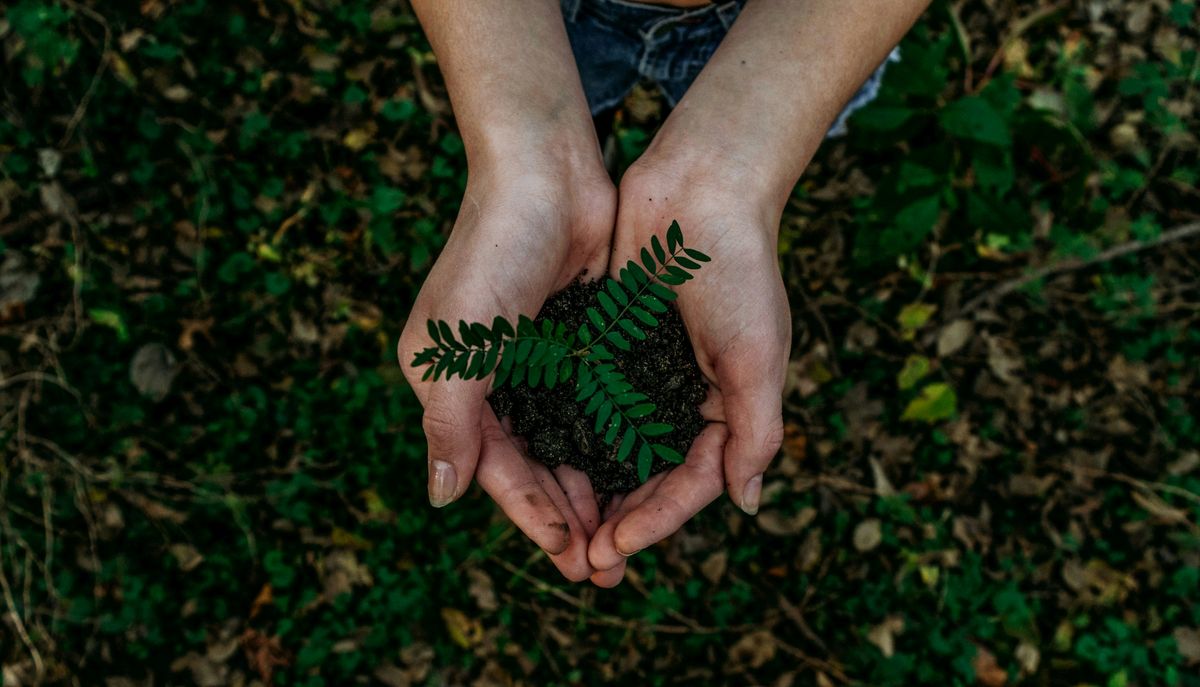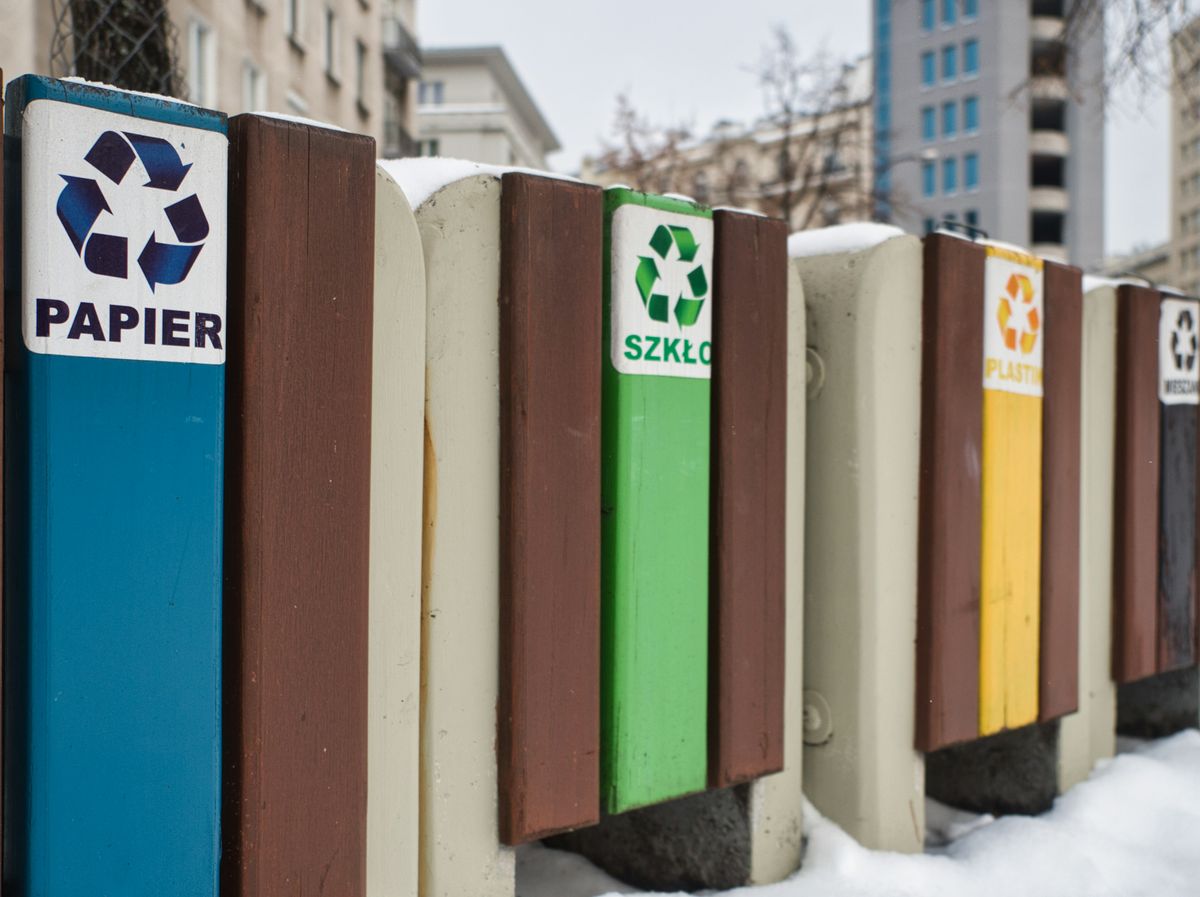Table of Contents
Green Living Hacks: Embracing a Plastic-Free Lifestyle sustainable living tips

Understanding the Impact of Single-Use Plastics
The convenience of single-use plastics is overshadowed by their lasting damage to the environment. Single-use plastics are a major pollutant, ending up in landfills and oceans, where they pose a serious threat to wildlife and ecosystems. By choosing to avoid them, you’re directly contributing to reducing this harm.
Identify common single-use plastics in your daily life, such as plastic bags, water bottles, straws, and coffee cup lids. Making the switch to reusable alternatives can significantly decrease waste generation. Investing in eco-friendly products ensures durability and longevity, which is crucial for a sustainable lifestyle.
Reducing single-use items is not just a personal choice; it’s a collective step towards a healthier planet. Saying no to plastic bags, straws, and utensils reduces plastic pollution and helps protect our oceans and the creatures that call them home.
The first step in embracing a plastic-free lifestyle is to understand the impact of these materials. Plastics do not biodegrade and can break down into microplastics that harm ecosystems and wildlife. By being mindful of our consumption, we can make a difference.
Alternatives to Common Plastic Items
Making the switch to sustainable alternatives is not just a trend; it’s a commitment to a healthier planet. Bring reusable bags when shopping to avoid single-use plastics. Keep a few in your car or bag so you’re always prepared. Swap out disposable water bottles for a durable, reusable one. There are many stylish and practical options available that can accompany you everywhere.
Reducing single-use items is a big priority in adopting an eco-friendly and sustainable lifestyle. Investing in eco-friendly and sustainable products ensures durability and longevity.
Say no to plastic straws. If you need a straw, consider purchasing a reusable one made from stainless steel, bamboo, or silicone. Additionally, explore the range of bamboo kitchen utensils like spoons, spatulas, and tongs. These 100% biodegradable products are a step towards a zero-waste kitchen.
- Mindful Shopping: Buy only what you need and choose products with minimal or no packaging. Bulk stores can be a great option for package-free goods.
- Composting Organic Waste: If you have access, compost your food scraps instead of throwing them in the trash.
- Recycle Effectively: Be informed about your local recycling guidelines to ensure you’re recycling correctly.
Preparing for a Plastic-Free Week
Embarking on a plastic-free week is a commendable step towards sustainability. To ensure success, planning is crucial. Start by identifying the single-use plastics you regularly encounter and brainstorm alternatives for each. Here’s a simple guide to get you started:
- Identify Common Single-Use Plastics: Make a list of the plastic items you use daily, such as water bottles, grocery bags, and straws.
- Alternatives to Single-Use Plastics: For each item on your list, find a sustainable alternative, like a reusable water bottle, cloth grocery bags, or metal straws.
- Be Prepared: Equip yourself with these alternatives by keeping them handy in your car, office, or bag.
- Reflect on the Experience: At the end of the week, take time to reflect on the changes you’ve made and the challenges you faced.
By the end of this one-week challenge, you’ll likely notice how prevalent single-use plastics are and feel more empowered to make sustainable choices in your daily life. Remember, every plastic item avoided is a small victory for our planet.
Each step you take this week will contribute to a larger impact. Don’t be shy about refusing plastic items, and use this opportunity to educate others on the importance of reducing plastic waste. The experience gained from this challenge can pave the way for a more sustainable lifestyle beyond just one week.
Green Living Hacks: Energy Conservation: Small Changes, Big Difference

Switching to Energy-Efficient Lighting
Making the switch to energy-efficient lighting is a bright idea for both your wallet and the environment. Replacing conventional light bulbs with LED bulbs can significantly reduce your electricity usage. LEDs are not only more energy-efficient, but they also have a longer lifespan, meaning less waste and fewer replacements.
- Use natural light whenever possible
- Turn off lights when leaving a room
- Choose LED bulbs over traditional bulbs
Embracing energy-efficient lighting is a simple yet effective step towards a sustainable lifestyle.
Educating others about the benefits of energy-efficient lighting can amplify the impact of your actions. Share tips and encourage friends and family to make the switch, fostering a community of energy conservation.
Unplugging Electronics to Save Power
In the quest for a more sustainable lifestyle, one of the simplest yet effective actions you can take is to unplug electronics when they’re not in use. Many devices continue to draw power even when turned off, a phenomenon known as ‘phantom load.’ By addressing this, you not only reduce your energy consumption but also contribute to environmental benefits.
- Unplug chargers, appliances, and electronics when not in use
- Use power strips to easily switch off multiple devices
- Be mindful of appliance use, like running full loads in dishwashers
Unplugging isn’t just about energy conservation; it’s a step towards mindful consumption and a reflection of our commitment to the planet.
Additionally, unplugging certain appliances can lead to significant savings. For example, a CNET article highlighted that unplugging can help save on electricity costs and has the added benefit of preventing millions of metric tons of environmental emissions. It’s a small action with a big impact.
Conducting a Home Energy Audit
A home energy audit is a crucial step in identifying areas where you can improve energy efficiency and reduce consumption. Before the energy auditor arrives, ensure that your home is prepared by closing and latching windows, securing doors, and opening blinds or curtains. This will allow for a thorough and accurate assessment.
Here are some key steps to take when preparing for an energy audit:
- Close and latch all windows to prevent drafts.
- Secure doors and raise blinds or draw open curtains to allow for natural light.
- Have a list of past energy bills available for the auditor to review.
- Note any areas of concern, such as rooms that feel draftier or have temperature inconsistencies.
Conducting a simple energy audit can reveal simple changes that make a significant difference, like adjusting your thermostat or sealing drafts around doors and windows. By taking these steps, you can enhance your home’s energy efficiency and contribute to a more sustainable lifestyle.
The Power of DIY: Natural Cleaning Solutions

Creating Your Own All-Purpose Cleaner
Making your own all-purpose cleaner is not only cost-effective but also a great way to reduce the environmental impact of household cleaning. Mixing simple ingredients you likely already have at home, you can create a versatile cleaning solution for a variety of surfaces.
To start, you’ll need a spray bottle, distilled water, unscented liquid castile soap, and your choice of essential oils for a pleasant scent. Here’s a quick recipe:
- 1 cup of distilled water
- 1 tablespoon of unscented liquid castile soap
- 10 to 15 drops of essential oil
Combine these in your spray bottle and shake well before each use. This mixture is particularly effective for cleaning glass, countertops, and tiles.
Remember, the key to a successful DIY cleaner is the right balance of ingredients. Too much soap can leave streaks, while too little may not be effective in cutting through grime.
By embracing the DIY approach, you not only create a safer home environment but also contribute to a more sustainable world by minimizing the release of harmful chemicals.
Recipes for Non-Toxic Scouring Powders
Creating your own non-toxic scouring powders is not only better for the environment but also for your health. Mix 1 cup of baking soda, /2 cup of salt (not iodized), and /2 cup of borax powder for a powerful cleaning blend. This mixture is perfect for tackling tough grime on surfaces that need a good scrub, such as sinks and bathtubs.
For an extra boost, spritz the area with vinegar or lemon juice before scrubbing. The acidic reaction helps to lift dirt and create scrubbing bubbles, making your cleaning routine more effective and enjoyable.
Additionally, consider adding a few drops of your favorite essential oil to the mix for a pleasant scent. Essential oils like lemon or lavender not only add fragrance but also possess natural antibacterial properties. Here’s a simple list to get you started:
- Baking soda: for gentle abrasion
- Salt: for extra scrubbing power
- Borax powder: for enhanced cleaning
- Vinegar or lemon juice: for a reactive clean
- Essential oils: for a natural fragrance and antibacterial boost
Eco-Friendly Solutions for a Fresh Home
Creating a fresh and inviting home environment doesn’t require harsh chemicals or expensive products. Embracing eco-friendly solutions can be simple, cost-effective, and better for the planet. For instance, consider using baking soda and vinegar for a powerful cleaning combo that tackles grime without the toxins.
By focusing on natural ingredients, you not only protect your health but also reduce the environmental impact of your cleaning routine.
Here’s a quick list of eco-friendly essentials for a fresh home:
- Baking soda for deodorizing and scrubbing
- White vinegar for disinfecting surfaces
- Essential oils for natural fragrance
- Castile soap for an all-purpose cleaner
In addition to these basics, there are numerous natural cleaning products available that can help you maintain a clean home without compromising on sustainability. Products like Dr. Bronner’s Sal Suds and Grab Green Bleach Alternative Pods are among the best natural cleaning products for those looking to make a more eco-friendly choice.
Cultivating Green Spaces: Trees and Gardens

The Benefits of Planting a Tree
Planting a tree is more than just a symbolic gesture towards green living; it’s a direct contribution to the environment with a multitude of benefits. Trees are vital for the environment, absorbing CO2 and improving air quality, which are essential for a healthy planet. They also offer habitat to wildlife and contribute to biodiversity conservation.
When considering planting a tree, it’s important to choose the right species. Research which tree species are native and suitable for your area’s climate and soil type. Local nurseries can provide valuable advice. Here’s a simple guide to get you started:
- Understand the benefits of trees
- Choose the right tree for your area
- Find the right spot, considering the tree’s mature size and root system
Planting trees is a simple action that has powerful benefits, from improved air quality to climate change resilience.
Community involvement can amplify the impact of your efforts. If possible, organize a community tree-planting event to increase local green spaces and spread awareness. Sharing your gardening journey on social media or community platforms can also inspire others to take part in this sustainable practice.
Starting Your Own Sustainable Home Garden
Starting your own sustainable home garden is a rewarding endeavor that not only provides fresh produce but also contributes to a healthier planet. Begin with easy-to-grow herbs and vegetables, such as basil, mint, parsley, tomatoes, and lettuce. These can thrive even in small spaces or containers, making them perfect for urban gardeners.
Italics are not just for aesthetics; they represent the foundation of your garden—organic practices. Use compost as a natural fertilizer and adopt non-chemical methods for pest control to maintain an eco-friendly garden.
By engaging in gardening, you not only learn about the importance of plants in our ecosystem but also gain the opportunity to educate others, especially if you involve children in the process.
Here’s a simple list to get you started:
- Find a suitable location considering the mature size and root system of the plants.
- Start small to manage your garden easily and expand as you gain more experience.
- Embrace organic gardening practices for a sustainable approach.
Involving the Community in Green Initiatives
Building a sustainable community is a collective effort that requires the participation and engagement of all its members. Engage with your community by organizing events such as tree planting or creating a community garden. These activities not only beautify the neighborhood but also foster a sense of unity and shared responsibility towards the environment.
By leading by example and sharing your journey, you can inspire others to adopt eco-friendly practices. Whether it’s through social media or community platforms, showcasing your commitment to sustainability can encourage others to take action.
Participate in local environmental groups or online forums to stay informed and involved. Starting a discussion about sustainability with friends, family, or colleagues can spark a movement of positive change. Remember, every small action contributes to a larger impact on our planet.
Educate and spread awareness by organizing or participating in educational events. Support environmental causes through donations, volunteering, or advocacy. Your actions can create a ripple effect, leading to a healthier and happier community.
Waste Reduction: A Step Towards Zero-Waste Living

Implementing Daily Water-Saving Tactics
Water is a precious resource that is often taken for granted. By adopting daily water-saving tactics, you can play a vital role in water conservation, a critical aspect of sustainable living. Simple measures like fixing leaks, installing water-efficient fixtures, and using rain barrels to collect water for gardening can significantly reduce your household’s water consumption. Being mindful of water usage not only helps conserve this vital resource but also reduces your utility bills.
Save a few gallons daily. Excessive water consumption puts a heavy strain on the already limited freshwater available. However, water conservation comes down to the cumulative effect of small, mindful actions.
Here are some practical steps you can take to reduce your water footprint:
- Turn off the tap when brushing your teeth or shaving to save 25 gallons of water per month.
- Take shorter showers and challenge yourself to reduce your shower time, saving gallons each time.
- Fix leaks promptly; a dripping faucet can waste a significant amount of water over time.
- Use a bucket instead of a hose for tasks like washing your car or watering plants, to greatly reduce water usage.
- Adjust your sprinklers to ensure water is only hitting the lawn and not the house, sidewalks, or street.
Adopting Meatless Mondays for a Healthier Planet
Embracing Meatless Mondays is more than a dietary choice; it’s a commitment to reducing our carbon footprint and exploring the richness of plant-based cuisine. By choosing not to consume meat one day a week, you can make a significant environmental impact.
Adopting Meatless Mondays means discovering new flavors and nutrients while contributing to a sustainable future.
Getting Started with Meatless Mondays:
- Plan your meals by considering plant-based alternatives for your usual meat dishes.
- Explore new vegetarian recipes to diversify your diet.
- Share your experiences and encourage others to join the movement.
Tips for Enjoyable Meatless Meals:
- Involve friends and family in the experience to make it more enjoyable.
- Experiment with international cuisines that offer a variety of vegetarian options.
- Remember that every meatless meal is a step towards a healthier planet and a healthier you.
Effective Recycling: Beyond the Basics
Recycling is more than just a routine; it’s a pivotal component of sustainable living. By making a conscious effort to recycle, we can all contribute to a healthier planet. It’s crucial to go beyond just separating paper and plastics; understanding and following your local recycling guidelines is essential for effective recycling.
- Be informed about your local recycling guidelines to ensure you’re recycling correctly.
- Consider DIY solutions for items you might otherwise throw away and find new uses for old items.
- Composting Organic Waste: If you have access, compost your food scraps instead of throwing them in the trash.
- Mindful Shopping: Buy only what you need and choose products with minimal or no packaging. Bulk stores can be a great option for package-free goods.
Recycling isn’t just about waste—it’s about mindset. By evaluating our habits and making mindful choices, we can significantly reduce our environmental footprint.
Responsible disposal and recycling are key for protecting our environment. Incorporating recycling bins and composting systems into your home setup can streamline waste management efforts. Prioritize responsible disposal and recycling practices to minimize waste sent to landfills and foster a more sustainable future.
5 Tips and Techniques for Growing Eggplant: From Seed to Plate
Cultivating Zucchini: Tips for a Successful and Abundant Harvest
Mastering the Art of Growing Carrots: Tips for a Bountiful Harvest
Cultivating a Sustainable Lifestyle: Practical Tips for Eco-Friendly Living — Sticky
10 Easy Sustainable Living Tips for a Greener Lifestyle — Sticky


